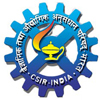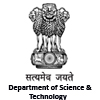|
|
 |
 |
 |
 |
||
| Research Facilities | |
|
Biosafety level II containment facility for in-vitro drug testing using Automated TB drug sensitivity workstation (Bactec-460) Anoxomat mark II system for anaerobic microbes Flowcytometry for drug kinetics and mechanism of action studies Animal cell culture facility Spectrofluorometer/UV-Vis spectrophotometers and ELISA reader Ultra Centrifuge and High speed refrigerated centrifuge Animal House Small animal models for testing drug safety and efficacy Animal isolators for in-vivo drug testing Microtome, Plethysmometer and Analgesiometer Modern Biology instruments for routine experimentation in the area of Molecular Biology, Microbiology, Biochemistry, Biotechnology
|
|
| Achievements | |
|
Major Scientific Outputs/technologies Identification of novel anti-tuberculosis agents from Curcuma longa and Curcuma amada. High Throughput Procedure for Cell and Molecular Target Assay Identification phytomolecules Usnic acid, clarodane diterpene as anti-MRSA. Phytomolecules lysergol & its derivative identified as antibacterial agent against multidrug resistant E. coli. Glabridin, a phytomolecule from Glycyrrhiza glabra was reported first time as potential antimalarial agent. An Indian Traditional Knowledge based formulation coded as “IVT-15” for Rheumatoid Arthritis has been developed. The mechanism of action of hepatoprotective molecule ‘CLIV-92’ earlier isolated from Cleome viscosa was determined Scientific validation of Ocimum basilicum which is traditionally used for skin related problems was achieved and established its wound healing property. Safety profile of ayurvedic drug ‘Trikatu’ has been determined using small animal model. Development of value added products of human utility based on medicinal and aromatic plants (Skin & hair care, nutraceuticals, personal hygiene, mosquito repellent etc.). Identification of active herbal ingredients effective against acne-related microbes.
|
|
| Research Facility | |
|
Central Instrumentation facility for basic molecular biology experiments; Plant tissue culture and transgenic facility; Bioinformatics facility. |
|
| Recent Research & Achievements | |
|
Micro-propagation, transgenics and secondary metabolites in culture Direct regeneration system in Ocimum gratissimum and Pelargonium graveolens. Transgenic Tagetes erecta plants with CPPase gene from pyrethrum Micro-cloning protocol for O. basilicum (cv. CIM-Saumya), O. sanctum (cv. CIM- Angana), O. gratisissimum & O. kilimandscharicum using axillary/apical bud. Pollen germination in Ocimum species. In vitro Conservation of endangered economically important plants Molecular Biology of Ocimum species 4-Coumarate: CoA Ligase partitioning metabolites for Eugenol biosynthesis instead of Lignin in Ocimum sanctum. Transcriptome sequencing of Ocimum sanctum and Ocimum basilicum. Novel oxidosqualene cyclases, ObAS1 (KF636411) and ObAS2 (JQ809437) from Ocimum basilicum and functional analysis. Secondary metabolite acyltransferases, regulators and transcription factors from O. basilicum. Molecular Biology of Papaver somniferum Microarray analysis and involvement of laccase in stem and peduncle strength . Wound Induced tanscription factor from Papaver somniferum – PsWRKY . Molecular Biology of Artemisia annuua Differentially expressed genes were identified during contrasting growth stages for artemisinin content through microarray analysis. A WRKY transcription factor regulating artemisinin biosynthesis genes, and, a SMO gene involved in sterol biosynthesis were characterized. Homologs of trichome-development-related genes such as AaGL2, AaTTG1 and AaMIXTA from Artemisia annua were identified, cloned. Molecular Biology of Catharanthus roseus Molecular and morphological characterization of vindoline-rich genotype. A LIM transcription factor involved in regulating phenylpropanoids and TIA pathway genes was characterized. Others Molecular interaction and dynamics studies to identify antimicrobial, anticancer and anti Alzheimer phytomolecules and their targets Terpene synthases from Pelargonium graveolens. Azadirachta indica (Neem) transcriptome. Commonality in plants balancing the three doshas (Vata, Pitta, Kapha). DNA marker analysis and diversity assessment for Gymnema sylvestre, Mucuna pruriens , Vetiver, Geranium, Mentha arvensis, Ocimum basilicum, Ocimum kilimandscharicum, Silybum marianum, Acorus calamus.
|
|